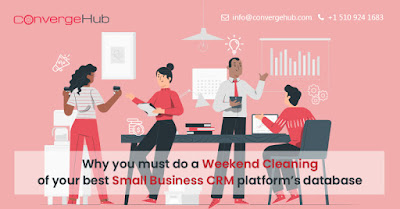Several major changes have happened over the past quarter-century.
Music has gone from spool tapes to CDs and pure digital media and while cabs are still operational, ridesharing services have made hailing a ride much easier nowadays.
During this same time period, how modern companies interact
with their customers has also come a long way.
Although still, today telephones retain a certain level of popularity,
nevertheless, emails, chats, and social media have all gained significant
grounds in modern times.
Advanced technologies like Chatbots which are powered by AI and machine learning are also nowadays adopted by businesses and customers alike.
In the past customer service teams documented their customer-facing interactions in a basic manner. Twenty-five years ago, call tracking systems might have been nothing greater than an off-the-shelf, customized database used for collecting customer details and record their problems (if at that time companies bothered at all).
Thereafter in the late 1980s, CRM (Customer Relationship Management) systems were born and with the introduction of easy to use CRM software solutions customer-facing teams (sales, marketing, and customer support) no longer had to struggle to work with data stored in disconnected and silo business applications as all-in-one CRM presented a 360-degree united view of the customer’s purchase and service histories, which in turn could drive new insights into businesses for taking appropriate actions.
Although as this above-stated concept was a step forward at
that point in time, but the limitations of CRM are apparent right now.
Even in the present times an easy to use
CRM does nothing more beyond catering an individualized view of sales,
marketing, and service department in an organization, and therefore do not
provide any urgency on solving customer-facing problems, which makes it
difficult to improve customer experience even with renowned brands across the
globe.
Hence for customer support, it is time that they must seek an approach that is different, (one that highlights refining customer experience, by applying a service management approach which is the upcoming evolution in modern business workflow today.
Engage Other Departments
The main concept behind building easy to use CRM is to consolidate customer information in a unified repository, which promises greater visibility into prospects and customers, their activities, and history during their journey with any company.
Now although easy to use CRM definitely helps companies with their sales and marketing efforts, nevertheless it does not offer a route to improve service and customer experience even today.
With customer management, solving customer issues becomes the priority.
There when a service management platform is integrated into a CRM, it captures customer information and thereafter identifies, classifies, and documents the issue. It even easily identifies issue trends and shares them with other departments in the organization.
Per se, integrating service management platforms with easy to use CRM software solutions not connects the teams using the CRM’s unified database but also provides those departments outside customer service with enhanced awareness of customer-facing issues and the outcomes they have on the customer experience when problems occur with their brands.
Assign work with
built-in accountability
When integrated with the functionalities of a CRM software modern customer management platform’s workflow capabilities are the key to enabling the entire company to work together on customer-facing issues.
Now as problems are recognized, customer service allocates problems to other departments within the organization and thereafter collaborates with them as they investigate and resolve those issues, which was not possible with earlier traditional CRM software platforms that lacked this visibility and collaboration and accountability that service management offers, which affected the customers resulting in deterioration of customer experience as customers had no idea of the timeframe needed by brands for resolving their issues.
Deliver proactive
service
The ease of collaborating across teams using a service management platform integrated into a CRM also offers an additional benefit- the quickest path top permanent resolution of issues.
This is because by working with other departments in the organization service management platform integrated into easy to use CRM helps in identifying the root cause of a problem and therefore can aid in fixing it permanently without offering a temporary workaround.
A modern service management platform integrated into easy to use CRM be it Salesforce or any other Salesforce alternative CRM software for small businesses even helps in simplifying the delivery of solutions to the affected customers in the self-service channels they prefer (like chatbots, knowledge-based articles and videos, automated email notifications and more).
Now, by addressing the root cause of the problems it implies that future customers will never face the problems, which in turn improves the customer experience of the brands proactively.
Drive a better
customer experience
Finally, as Forrester and other market research firms have pointed out that today’s competitive business environment in the marketplace places high stakes on providing world-class customer experience, and silo CRM software solutions for customer services are not cutting it, therefore it is time for implanting a new tool, one that does more than just taking down customer details which modern service management platform integrated into easy to use CRM does aptly by better engaging the entire organization in solving customer-facing issues.
Conclusion
Therefore in a gist, while legacy CRM software solutions can still benefit marketing and sales, but to boost customer satisfaction and drive world-class customer experience easy to use CRM software solutions that integrates with customer service management tools is the next evolution in customer service as it assigns the customer’s issues to the teams who can affect a permanent solution to the problems and ensure that subsequent customers will never encounter that issue.



